Italy has some of Europe’s most beautiful islands. From sizeable landmasses to tiny gems, you’ll find every kind of Mediterranean idyll here. Island homes make an excellent investment, says Fleur Kinson.
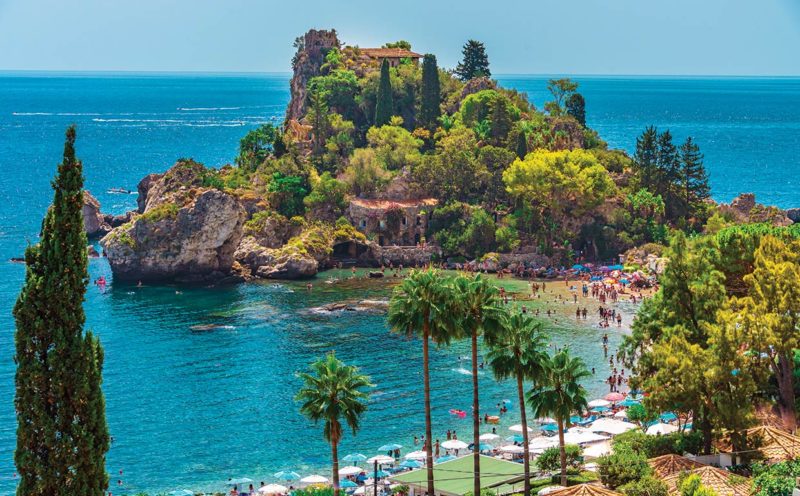
Featured photo © VanSky
Words by Fleur Kinson
Ah, the lure of islands!
Naturally romantic places, these spots of sea-encircled land offer a natural sense of escape.
An island is a little world of its own where you can feel beyond the reach of workaday mainland concerns.
It’s no surprise that many holiday dreams feature islands. Many holiday home dreams feature them too.
Intimacy is part of any island’s appeal, but so too is a unique identity.
Islands are very distinctive places where traditions, languages and wildlife have evolved in their own way.
Islands are often ‘special’. For leisure travellers, they have also often seemed a bit ‘exclusive’, because it was traditionally harder to reach them without, say, your own yacht.
Even now when several Italian islands can be reached by direct flights from the UK and are therefore every bit as accessible as mainland destinations, their aura of discerning luxuriousness lingers.
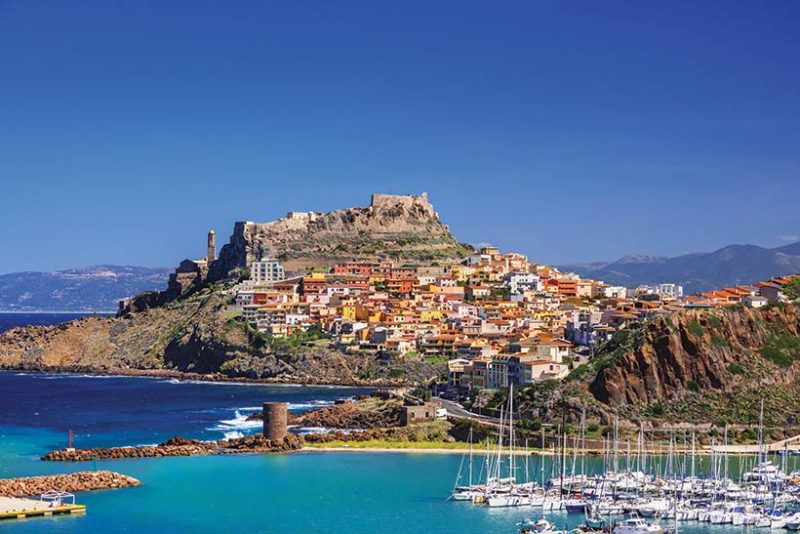
Spoilt for choice
It would take you a very long time to visit all of Italy’s islands. Because there are about 450 of them.
They include well-known day-tripper favourites such as Capri and Venice, remote luxury getaways such as the Aeolian Islands and Pantelleria, dainty little isles very few non-Italians have ever heard of, and big internationally loved destinations such as Sardinia and Sicily.
Given the sheer number of island options out there and the limited space available here, you’ll understand why we’ll be focussing mainly on the two biggest islands, Sardinia and Sicily, in this article.
But first some general points on buying property on any Italian island.
Note that such locations are seldom cheap, but they make a very good investment.
Island destinations are always in demand, so holiday rental prospects – and resale values – remain very strong.
What’s more, far-sighted restrictions on new building mean that most islands are very well-protected from over-development.
This safeguards their charm and character, as well as the value of their properties.
Prices can be especially high on the smaller islands, and sometimes there is very little on the market since no one wants to give up their precious island idyll.
But on the largest islands you won’t struggle to find affordable property, especially if you look slightly inland.
You could get a nicely situated village home half an hour from the sea for as little as €40,000.
In a beach resort, you might get a small apartment for €100,000.
Houses and villas in coastal areas tend to start at about €250,000.
Gorgeous Sardinia
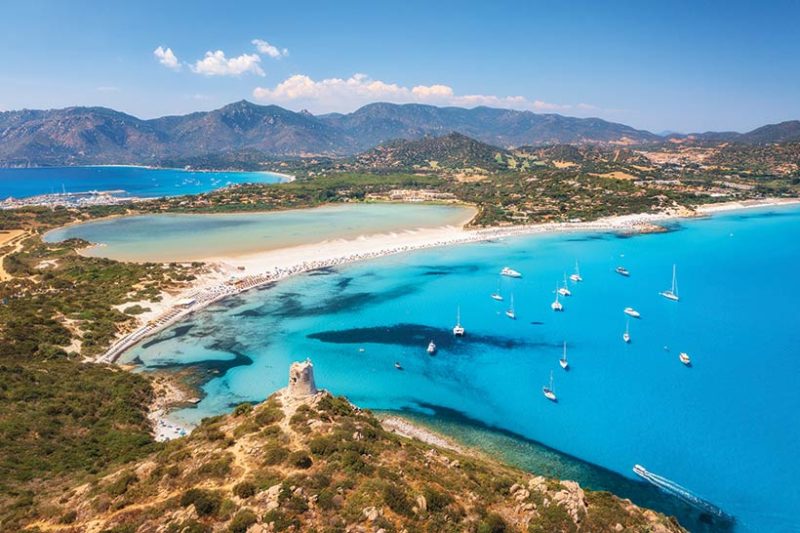
Some say the Med’s second largest island is the loveliest place in the whole sea.
It’s hard to argue with that when you’re gazing openmouthed at Sardinia’s white and gold beaches lapped by turquoise water, its wind-sculpted rock formations and mysterious ancient
stone towers, its pretty pinewoods, cork forests, vineyards and olive groves draped across dreamy round hills and low mountains.
Sardinia’s unspoilt natural environment owes much to the island’s low population density and to sensible limits on tourist development.
Sardinia has no big cities and no vast, sprawling resorts. Communities are small and friendly.
Sardinians are typically kind and gentle people who have a reputation for being quieter and less excitable than the traditional southern Italian stereotype.
Sardinia is also clearly an extremely healthy place to live and to be.
Carlo Vallebona of the estate agency Vallebona.com points out that the island “has one of the highest numbers of centenarians in the world.
“Beside some DNA predisposition, most of this is due to the healthy diet and a low-stress lifestyle.
“It seems that every day you spend in Sardinia is helping to extend your lifespan!”
Antonello Demuro of the estate agency Live in Sardinia concurs, noting that, “Many investors are seeking to escape from chaotic and polluted centres elsewhere in Europe to embrace a new way of living.
“With its spacious territory and low population density, Sardinia is seen as an ideal destination for those longing for a more balanced lifestyle.”
He adds that, “Sardinia has been one of the most desired locations in the Mediterranean since the Covid travel ban was lifted.”
The property market, North to South
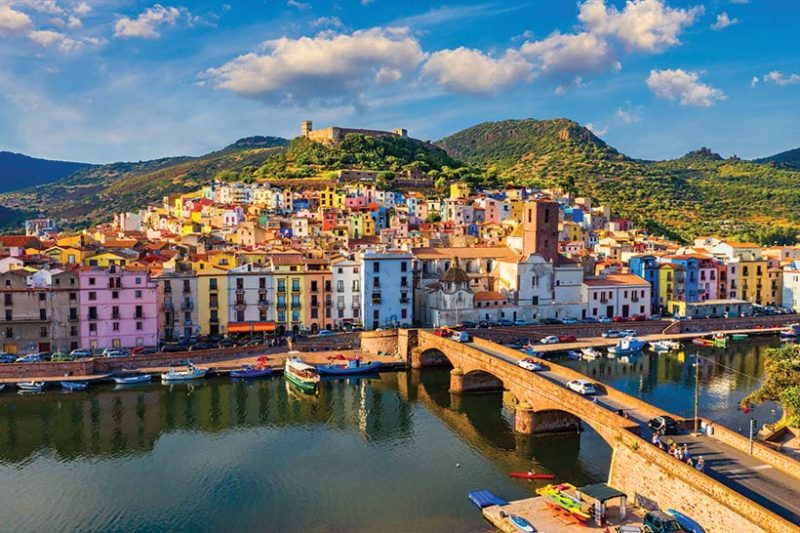
At 140 miles long by 70 miles wide, Sardinia is a large place with various property hotspots and bargain areas in different parts of the island.
The northern coast is the most developed and popular stretch.
Alghero in the northwest is a delightful, colourful seaside town with moderate-to-high property prices.
Little Bosa just south of Alghero is much cheaper.
The central northern coast holds lots of moderately priced, good-value homes; Castelsardo is a charming spot and its surrounding area is a good one to investigate.
The northeast includes the fabled North Sardinia coast, where property prices are among the highest in Europe.
But just a few miles either side of this gilded stretch, homes can be had for a third or a quarter of the price.
South of Olbia, resorts such as Budoni and San Teodoro are great spots to look at for less expensive seaside apartments.
Sardinia’s long western and eastern flanks are the island’s least developed coastlines.
The central western coast from Bosa down to Oristano is an up-and-coming area that might suit someone looking for an inexpensive coastal home.
Sardinia’s wild and empty eastern coast is cheaper still, as is the island’s sleepy deep interior.
Sardinia’s southern coast, meanwhile, is a very lovely place, and can generally be a bit cheaper for property than the north.
Resort areas to consider include Chia, Villasiminus, the Costa Rei and Santa Margherita di Pula.
As you might imagine, holiday rental prospects are very strong in Sardinia. Antonello Demuro says, “Visitors from all over the world flock to Sardinia from May till the end of October.
“Non-resident property-owners commonly rent out their properties and generate good, if not excellent, rental incomes. There is also a constant growth in long-term rentals, triggered by the opportunity to work remotely.”
Carlo Vallebona adds, “On this topic I have to say that British owners always perform very well.
“Whereas Italians at times try to furnish their holiday homes with granny’s furniture leftovers, the Brits know much better how to make it nice, offer what is needed and give a compelling customer service.”
Lively Sicily
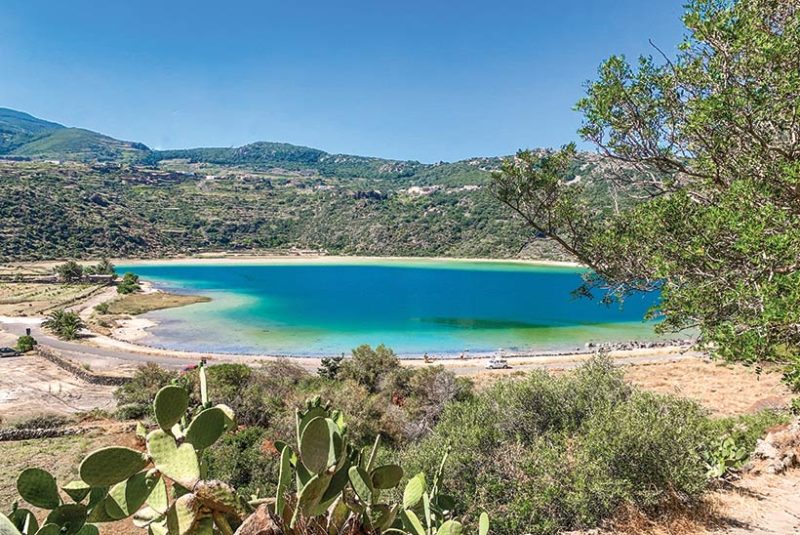
Sardinia’s southern neighbour Sicily is the Mediterranean’s largest and most populous island.
This big colourful place features boisterous cities, time-warp villages, Greek temples, Norman cathedrals, Arab-influenced cuisine, long white beaches, fruit-clad hills, brooding mountains, windswept offshore islets and two entertainingly fiery but harmless volcanoes: Etna and Stromboli.
Sicily has long been loved by northern Italian homebuyers, but foreign buyers are a relatively new phenomenon.
You can find great value for money on the island.
The longest-established resort is beautiful Taormina on the east coast.
It has the island’s highest property prices (they’re on a par with those of mainland Italy’s Amalfi Coast) but its holiday rental prospects are superb.
Considerably cheaper is the increasingly fashionable resort of Cefalù in the middle of the northern coast.
The landscape is steep and plunging along this coast and there are some especially good property bargains to be had by buying at higher elevations, where, of course, you’ll also get panoramic sea views.
The seaside itself can be costly but €150,000 could get you a decent house up the hill.
Over in the northwestern corner of Sicily, another appealing market holds sway in the area of Trapani – a lovely old beach town flanked by various small resorts and offering access to the enchanting nearby Egadi Islands (which are also known as the Aegadian Islands).
You could find yourself an apartment in Trapani for €100,000.
Across Sicily’s interior, there are plenty of homes that ask only a five-figure sum.
But if you want to be near the sea and still spend very little, you might consider the island’s long, wild and comparatively empty southern coast.
Rather more interesting is the island’s southeastern corner, specifically the fashionable provinces of Ragusa and Siracusa.
Here you’ll find handsome old towns built of sandstone in Baroque style, as well as beach resorts and fishing ports – all full of life and friendliness.
€150,000 would get you a nice country villa down here.
A final tip to anyone buying on Sicily is that it pays to negotiate on a property’s asking price.
Haggling is a traditional part of Sicilian culture and there’s an expectation that you’ll do it too!
For more Italian property information, visit our archive.
